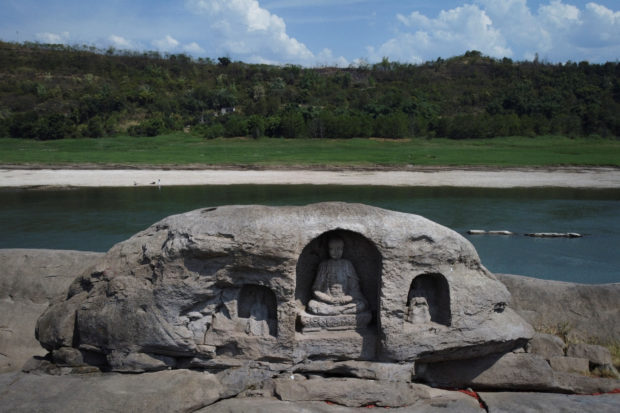
A once submerged Buddhist statue sits on top of Foyeliang island reef in the Yangtze river, which appeared after water levels fell due to a regional drought in Chongqing, China, August 20, 2022. in Xi’an, more than 680 fragments of Buddha statues and pagoda sculptures have been unearthed in the ruins of an ancient market. REUTERS
XI’AN — More than 680 fragments of Buddha statues and pagoda sculptures have been unearthed in the ruins of an ancient market in Xi’an, Northwest China’s Shaanxi province.
The statues were discovered in a pit in the ruins of East Market, a major commercial center during the Tang Dynasty (618-907).
The Buddha statues were made of clay, ceramic and stone, and most of them had been damaged, said Han Jianhua from the Institute of Archaeology under the Chinese Academy of Social Sciences, adding that they were packaged and moved elsewhere for better protection and further research.
Many of the Buddha statues are decorated with colored drawings and gold elements — which was a unique style of Buddhist art during the Tang Dynasty.
Based on Han’s speculation, the statues may be related to a Buddha hall or a shop’s warehouse located on the street.
Archaeologists have also found paths, drainage ditches, and house foundations, as well as a large number of cultural relics of the Tang Dynasty, including tricolored bowls, in the East Market ruins.
The market ruins were found in the late 1950s. With an area of around 1 square km, the site is over 1,000 meters long and 924 meters wide.
RELATED STORIES
Japanese collector returns ancient artifacts to Cambodia
Receding water levels of China’s Yangtze reveal ancient Buddhist statues